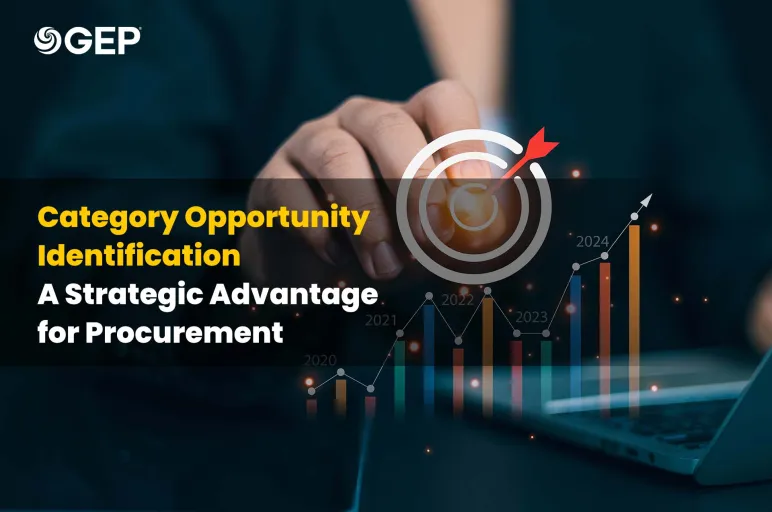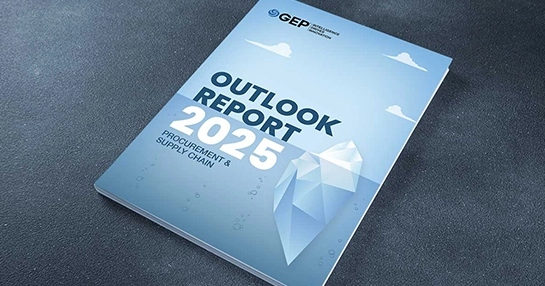
How Category Opportunity Identification Turns Procurement Data Chaos into Strategic Advantage
- Category Opportunity Identification finds hidden sourcing opportunities across fragmented and tail spend.
- It helps category managers focus on high-impact initiatives.
- It uses machine learning to build data-backed business cases.
November 05, 2025 | Procurement Strategy 5 minutes read
Every procurement leader knows the pattern. Big categories get constant attention — IT, logistics, raw materials. They’re well managed, benchmarked, and monitored. But below that tier there's a long tail of fragmented spend spread across suppliers, regions, and departments. And each small transaction on its own seems insignificant, but collectively they represent 20–30% of total spend.
Those small spends are where opportunity hides — duplicate suppliers, inconsistent pricing, and off-contract buys that escape scrutiny. Category managers try to analyze them manually, but it’s slow work. The data is messy, supplier names differ by system, and no one has time to comb through thousands of low-value transactions.
The result? Savings go unrealized. Procurement stays reactive, chasing renewals and urgent sourcing requests instead of strategically identifying where it can deliver more value. Meanwhile, finance continues to expect year-on-year savings that seem harder to find.
That’s where category opportunity identification steps in.
Ready for Growth? GEP Has the Answers
Transform your business with our AI-powered source-to-pay solutions
Why Current Tools Struggle to Spot Hidden Potential
Procurement teams already have access to spend analytics dashboards, supplier databases, and ERP reports. Yet even with those, opportunity detection remains mostly manual. The problem isn’t a lack of tools — it’s how those tools think.
Standard spend analytics show top suppliers and high-level category trends. They don’t dig into fragmented spend across departments or business units. When the same service is purchased under slightly different descriptions — consulting, advisory, strategy support — the system treats them as unrelated. That fragmentation makes category-level insights invisible.
Traditional rule-based tools miss context. They can’t tell whether ten suppliers in one region deliver identical items at different prices or if multiple business units buy similar products under local contracts. Without that context, procurement can’t see where to consolidate volume or run competitive events.
Data silos deepen the problem. As GEP and NC State University research highlights, procurement and supply chain functions still struggle to connect data across geographies and business systems, which limits AI’s ability to deliver actionable insights. Disconnected systems mean opportunity detection becomes guesswork.
Even when analytics identify categories with high spend, they don’t answer the next question: Where can consolidation or competition yield the biggest impact? Procurement ends up running the same sourcing events on familiar categories while hidden savings stay buried in the tail.
How Machine Learning Turns Noise into Opportunity
Category opportunity identification uses machine learning to analyze the entire spend landscape, and not just the top-tier suppliers. Further, it finds patterns that humans might not, helping connect the dots between items, departments, and regions.
The process starts by cleaning and classifying spend data automatically. Machine learning models recognize that office supplies, stationery, and printing materials refer to the same category, even if coded differently. They detect overlaps, merge similar suppliers, and highlight where consolidation could bring price consistency or volume discounts.
Next, the model looks for spending patterns that deviate from category norms. If one business unit consistently pays higher rates for the same service or buys from unapproved suppliers, it flags those gaps. Procurement can then step in with clear, data-backed evidence to renegotiate terms or unify contracts.
ML also reveals where competitive sourcing makes sense. For example, if five suppliers handle similar facility management services across regions, the system identifies them as candidates for a bundled sourcing event. Category managers can then test scenarios (consolidating suppliers, adjusting volumes, or running regional bids) to estimate savings potential before taking action.
This approach doesn’t replace human judgment; it amplifies it. Category managers can finally focus on opportunities with real impact rather than spending weeks sifting through spreadsheets.
How Procurement’s Day-to-Day Work Has Changed
For most organizations, the biggest win from category opportunity identification is time. What used to take analysts weeks of data cleanup now happens in minutes. The system automatically categorizes tail spend, normalizes supplier records, and surfaces opportunities ranked by potential savings or process efficiency.
Instead of reacting to stakeholder demands, procurement can proactively approach the business with concrete plans — “We’ve identified five overlapping contracts in marketing services. Consolidating them could save 12%.” These insights change the tone of stakeholder discussions from defensive to collaborative.
Finance teams benefit too. Data-backed opportunities strengthen business cases for change, especially when budgets are tight. Procurement can show exactly where inefficiencies sit, how much consolidation could save, and what the impact would be on supplier diversity or risk exposure.
GEP research shows that companies applying machine learning to category analytics reduce unmanaged spend by up to 25% and accelerate sourcing cycle times by nearly a third. Those improvements aren’t theoretical — they show up in faster sourcing decisions, cleaner data, and more consistent supplier management.
Over time, category opportunity identification becomes a feedback loop. Each sourcing cycle feeds the model new data, improving its ability to detect emerging trends or price discrepancies. Procurement evolves from reporting spend to predicting where the next opportunity will appear.
Turning Insight into Action with Smart Procurement Platforms
Spotting opportunities is only half the job. Acting on them at scale requires technology that connects insight to execution. Procurement platforms equipped with intelligent agents make that possible.
When the system flags an opportunity — say, three suppliers providing the same service in different regions — the agent doesn’t just report it. It can suggest sourcing events, estimate savings based on prior results, and even draft supplier communication templates. Category managers can approve, adjust, or reject recommendations directly from the dashboard.
Because the insights link back to actual contracts, invoices, and supplier records, every opportunity is traceable. Procurement can show stakeholders exactly how recommendations tie to data. That transparency strengthens buy-in and speeds up implementation.
Explore 101 AI Use Cases
Real-world use cases that show how AI is transforming every stage of procurement
Business Outcomes You Should Expect
Category opportunity identification not only finds savings, but it also changes how procurement operates. It provides the intelligence to act early and lead sourcing strategy instead of reacting to spend trends.
- Faster opportunity discovery: Automated analysis replaces manual reviews.
- Higher sourcing impact: Focus shifts to categories with real potential.
- Stronger credibility: Every sourcing initiative backed by verified data.
Procurement finally gains the clarity to turn data chaos into competitive advantage — one category at a time.



